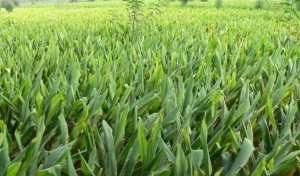According to world food programme, a worldwide hunger scenario comprises of nine-hundred twenty-five million people who don’t have sufficient food to eat – more than the populaces of Canada, USA and the European Union; whereas 98% of the globe’s hungry reside in developing nations. Asia & the Pacific province is home to more than half the population of world and about 2/3 of the globe’s hungry people. Sixty-five percent of the globe’s hungry reside in only 7 nations: China, India, the Democratic Republic of Congo, Indonesia, Bangladesh, Ethiopia and Pakistan.
Famines have been always an issue due to economical, political and environmental causes; it subsisted since world war and even nowadays when globalization is roaring. At the same time, hydroponic method has given a big hope to grow crops on unproductive lands, but it’s the lack of resources, efficiency and awareness that developing & under-developed countries are still battling with the famine.
Many people nowadays live in regions of the globe which were never competent of producing adequate foods or are almost unfeasible to irrigate. Some farmable land remains underused since it’s under the control of scamp governments or is presently too tough for agriculture. One of the answers to the issue would be to grow food crops on a global scale. Government & industrialist must develop inventive tactics for making the most of crop growth on poor land; people can grow adequate food crops to meet their requirements.
Likewise, if agriculture with hydroponic is motivated, there would less predilections given to conventional soil-based agriculture, which comes with imprecise problems. Cultivators in poorer nations could be educated to rotate their yields to keep the soil fit season after season.
Few things offer such a solid & safe investment as food. Everybody needs to eat, and with an escalating global populace, food scarcity, and rising costs, investing in a safe source of food is an intelligent move. By far investing in hydroponics is the safest means to make sure good return on your investment since they don’t suffer the same susceptibilities that other soil-based crops do.
Since hydroponic food crops are grown in controlled, automatic surroundings, weather systems and unexpected weather conditions don’t affect the growth tempo, whereas pests & other issues are much easier to stop than they are in the field. This signifies hydroponic crops have a persistently high and steady yield.







